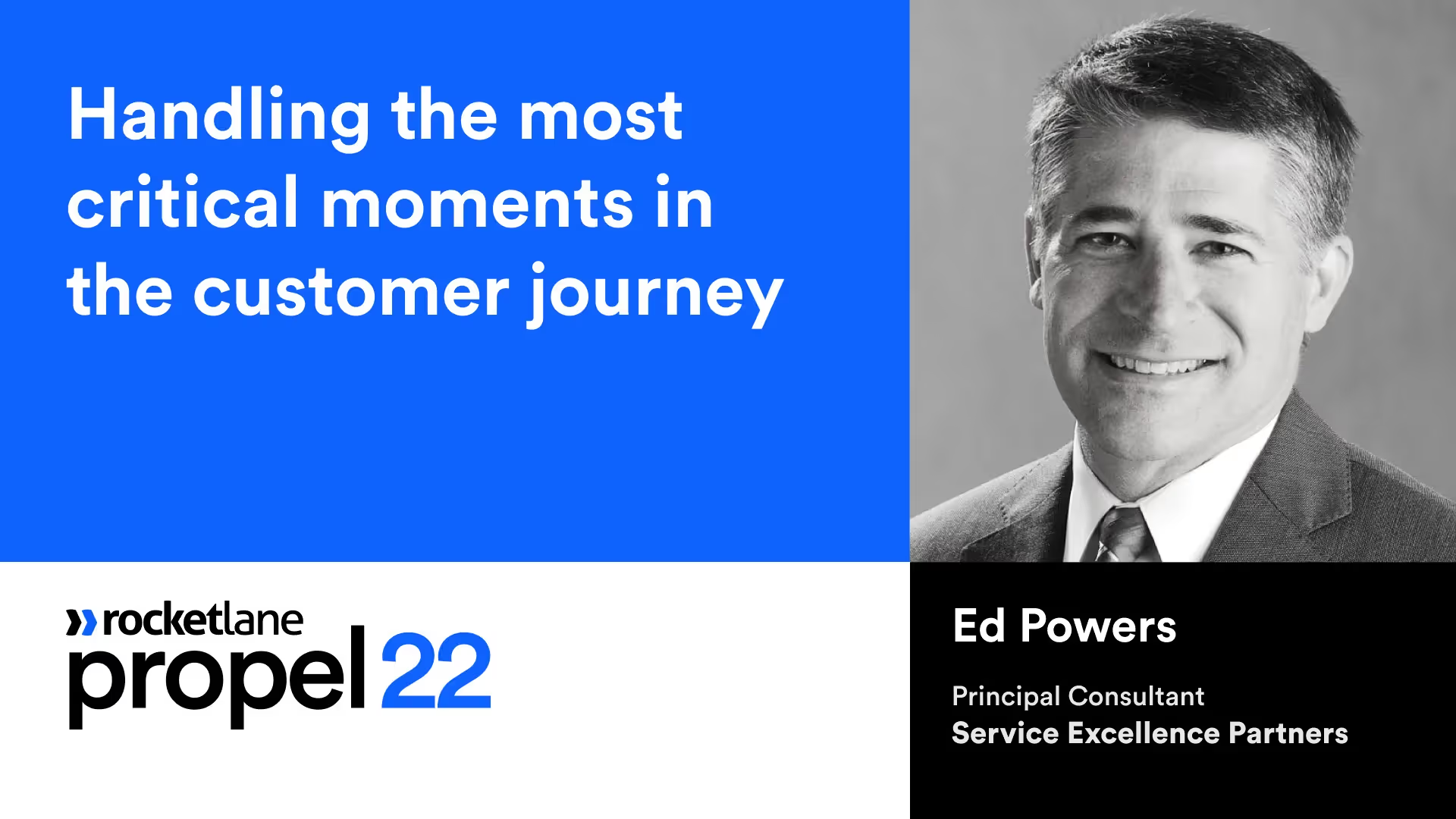At Propel22, customer success and customer experience expert Ed Powers explored the science behind ensuring the happy path to renewals and expansions and avoiding the unhappy path to churn.
In this session, Ed spoke about:
- Critical moments in the customer journey
- Why they are important
- How you can manage these critical moments to ensure renewals and expansion
- Applying neuroscience to move customers to the ‘happy path’ instead of the ‘unhappy path’
This post provides key takeaways from the session.
1. The goal of Customer Success
The main objective of customer success professionals is to influence customers’ decisions in terms of their renewals and expansions with us.
Understanding how the human brain works helps you understand how it makes decisions and what factors go into making those decisions. If you are able to influence those factors, you can influence decisions.
Ed Powers said that he has tried it and seen success with his clients and went on to explain the neuroscience behind customer decisions, using the neurobiology framework for decision making.
2. How brains make decisions

Representation
The first thing brains do when faced with a decision is to look at all the options available. Then, the options are assessed by gathering all available information about each of them and their outcomes.
Valuation
Using the information gathered, the brain assigns values to each of those options. There are six different factors that the brain weighs to assign a value to each option. This process is also iterative: the brain tends to go back and forth during this stage.
In the customer decision context, values are benefits minus the cost, and more than business outcomes, ROI, etc.
Action selection
Once the brain is done attaching a value to each of these options, it selects the best option. Based on the selection it makes, the brain takes action.
Outcome evaluation
Every action leads to an outcome. The brain evaluates the actual outcome of an action against the outcome it expected.
Learning
The outcome experienced by the brain drives the learning process. The brain stores the learnings, and uses it to make decisions in the future. That is, the learnings drive future decisions.
Representation, valuation, and action selection are processes that come into play during the sales cycle. Sales people are always explaining options, actions required, and the outcomes they can lead to, to prospects. They are essentially trying to influence these processes in the customer’s brain.
Post-sales, the customer onboarding and customer success are concerned about the next process: outcome evaluation. Vendors pay very close attention to what the customer learns through their experience with the product and the team. The goal here is to influence the next decision: renewal and/or expansion.
3. The dual process theory
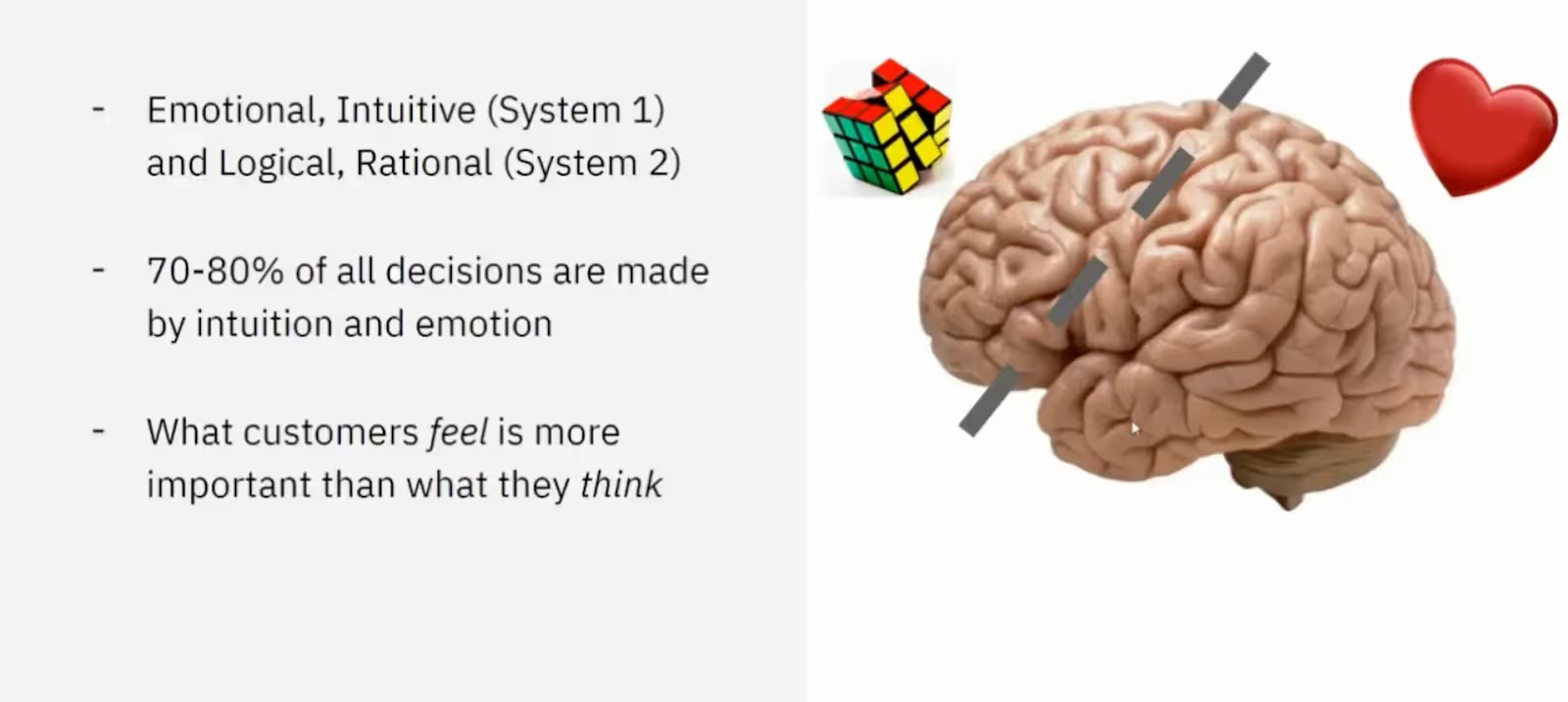
Scientific research shows that humans have two brains: one that is emotional and intuitive, named System 1; the other that is logical and rational, tagged System 2. System 1 is posterior part of the brain and is as old as the human race (3.5 million years old). System 2, the front part of the brain, is relatively new, and has been around for about 50000 years.
In evolutionary terms, the longer something has been around, the better it works. This is why System 1 works really well: it’s fast, efficient, uses up lesser energy, and is extremely influential when it comes to decision-making. System 2, on the other hand, is clunky: it’s effortful, slow, consumes a lot of energy.
This means that 70-80% of decisions made by the human brain are influenced by System 1: we use our intuition and emotion to make them. All our decisions go through an emotional system as a last stage. As a result, logic is often sidelined. When logic does participate, it is mostly to justify decisions that have already been made.
What this means in the customer experience context is, what our customers feel is more important than what they think. When we design customer experiences, we apply logic. But as has been established earlier, logic does not run the show.
4. How the brain learns value from experience
As mentioned earlier, the role of Customer Success to influence the learning process of customers. Ed explains the learning process using a graph with Value as the y axis and Time as the x axis.:
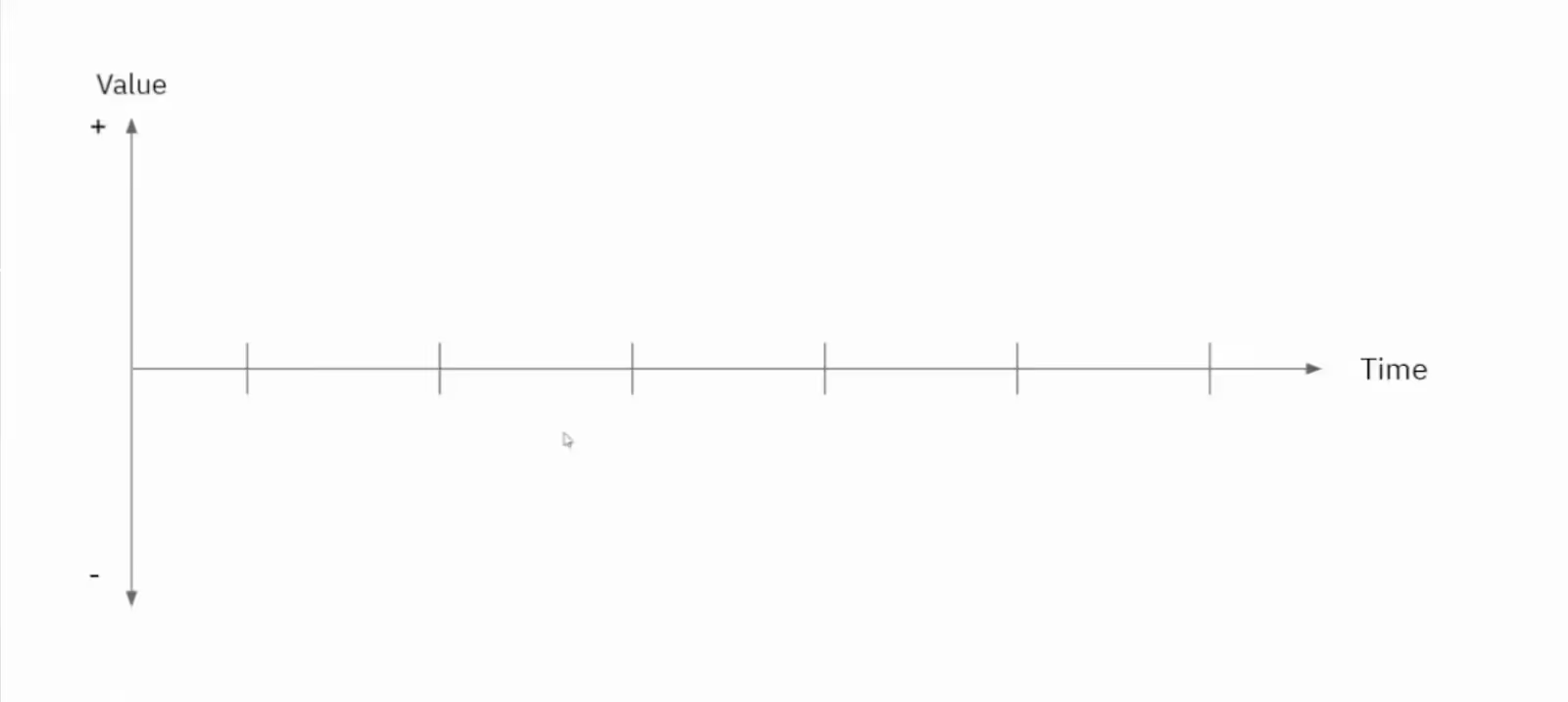
The marks on the x axis are discrete moments in time.
When the customer comes on board, there has to be an expectation. In order for humans to learn something, we need to have something to compare the outcome to. Which means we have to set an expectation prior to the event occurring. So when we make a decision, we do it by imagining what the outcome is going to be—we will be setting expectations. In sales terms, this process is called prospection. So the value learning process always starts with an expectation.
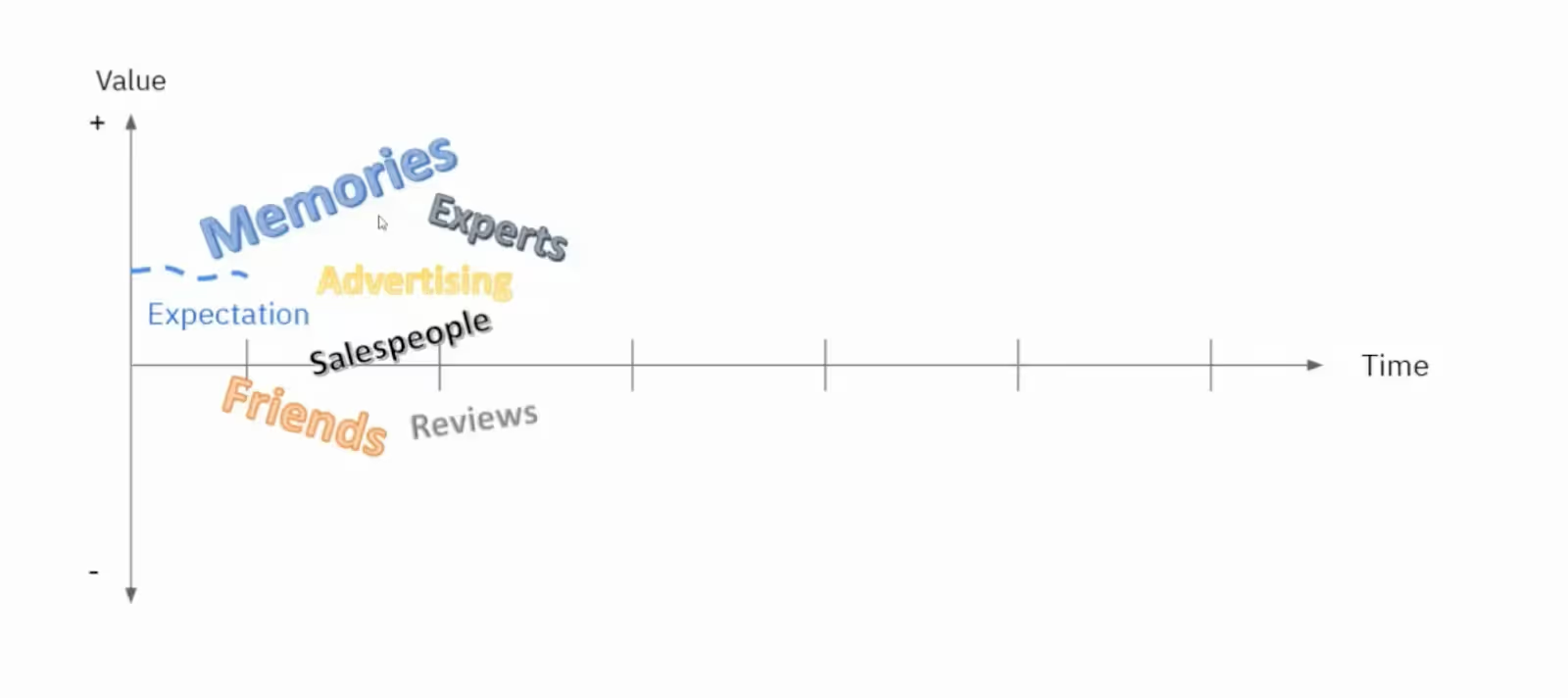
Customers gather information from talking to the salesperson, looking at customer reviews, expert advice, etc.
When they find that the value they receive exceeds their expectations, they feel rewarded, they have a positive emotional response:

This leads the brain to release dopamine, a neurotransmitter linked to rewarding experiences. This encodes this difference between what was expected and what was received as a reward.
Reinforcement learning
Thanks to the dopamine, the brain increases the expectation in the direction of the reward, resulting in a reward prediction error: there is a difference between the reward expected and reward received, going forward. The job of the customer success team, then, becomes reducing this error over and over again.
Over time, expectations become an accurate predictor of the reward. This is called reinforcement learning.
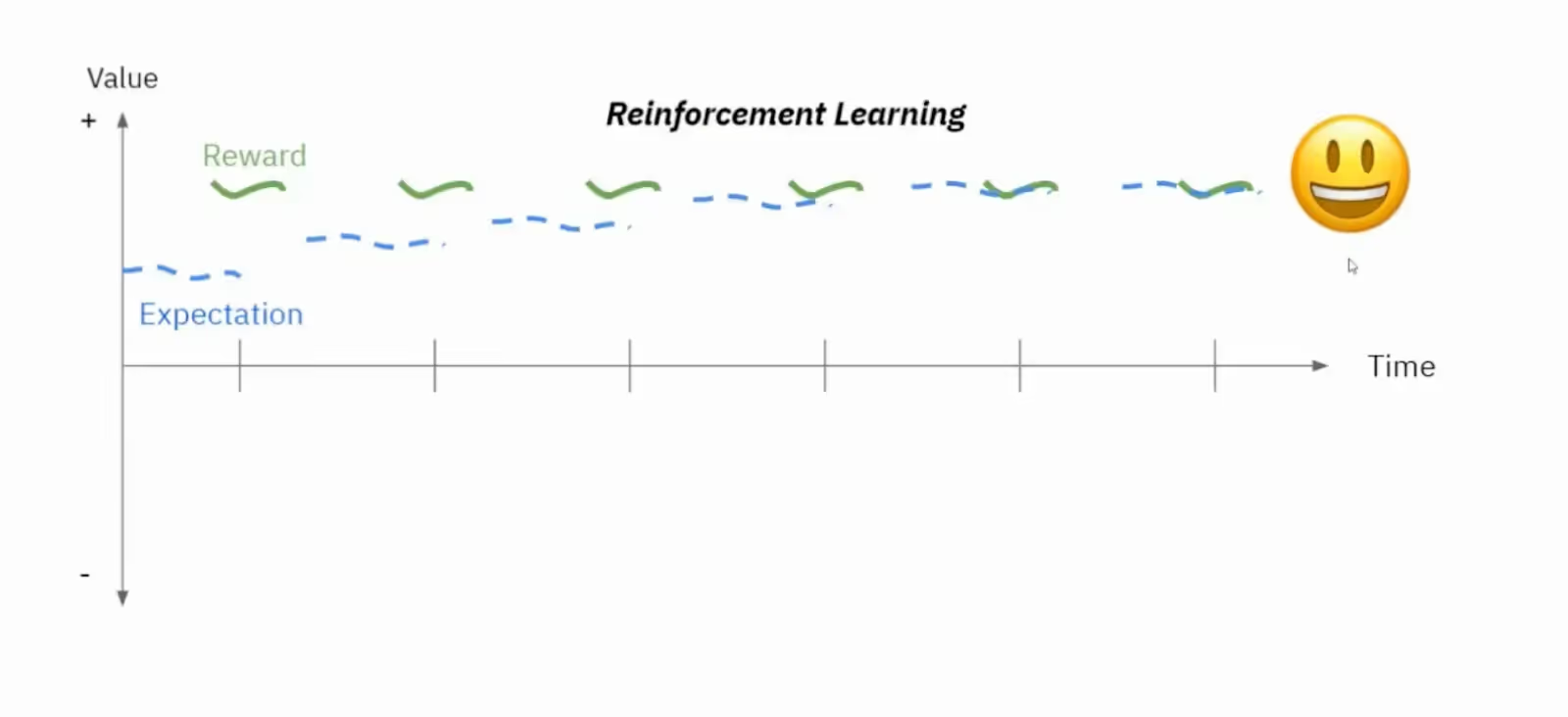
At the end of the day, the brain associates long-term action outcomes with the rewarding decision.
This also applies to negative outcomes: if the value received is lesser than the expected value, it leads to negative emotional response in the customer. The brain again maps its expectations to the negative outcome and continuously lowers its expectations from repeating the action.
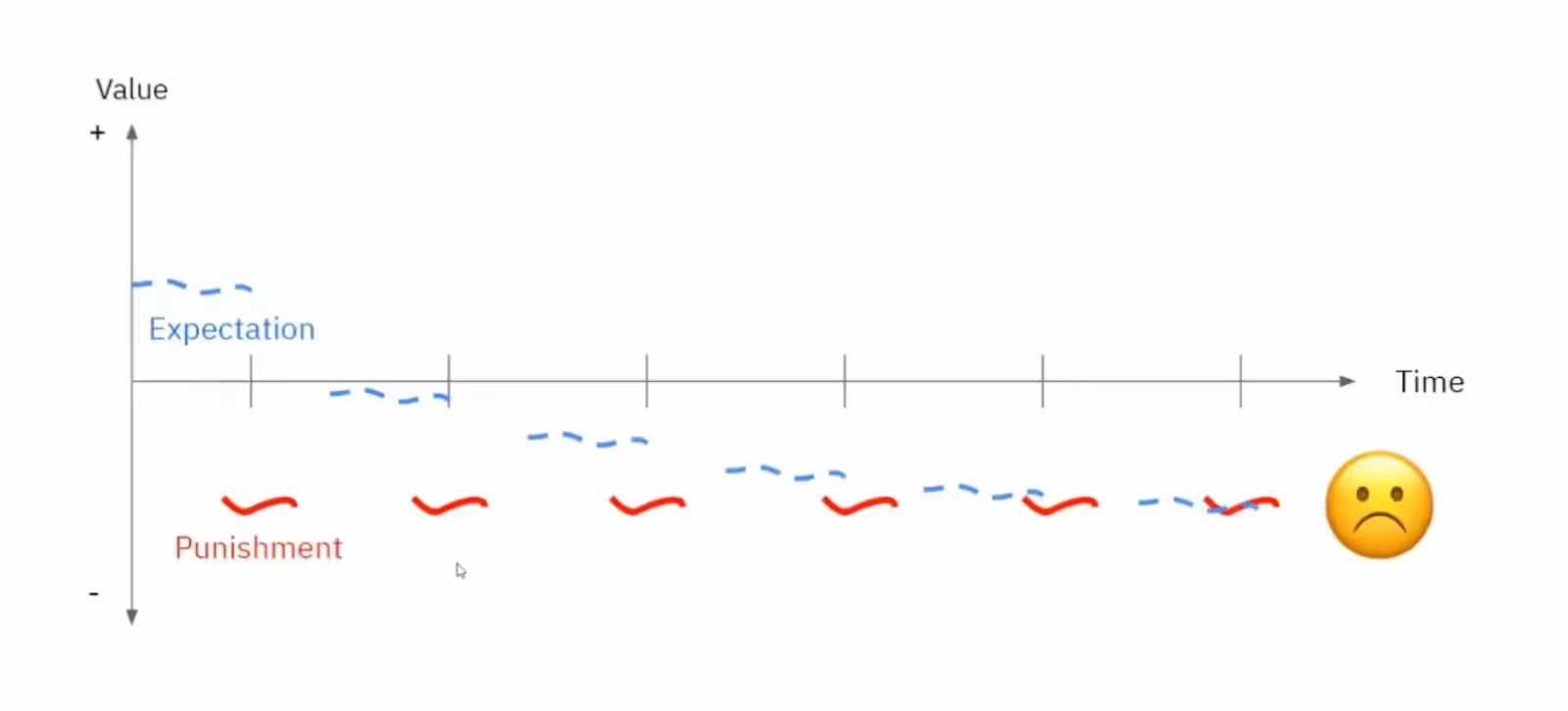
Confirmation bias
Now, when the brain experiences reinforcement of positive outcomes, confidence also increases. When setting an expectation for the first time, customers are still not entirely confident of the outcome. But will long-term positive experiences, their confidence also increases. This leads to confirmation bias.

Confirmation bias is when we notice things that support our preexisting beliefs, we ignore information that contradicts our beliefs. You just have to look at the conspiracy theories doing the rounds on the internet: they’re not logical or rational; yet people love it because it confirms their beliefs. Moral of the story: beliefs are much stronger and powerful than facts are.
Why should CS folks care about confirmation bias?
We may have happy as well as unhappy customers. Happy customers believe strongly in you and your brand, are deriving value from your offering, etc. The unhappy ones are those that do not have those experiences.
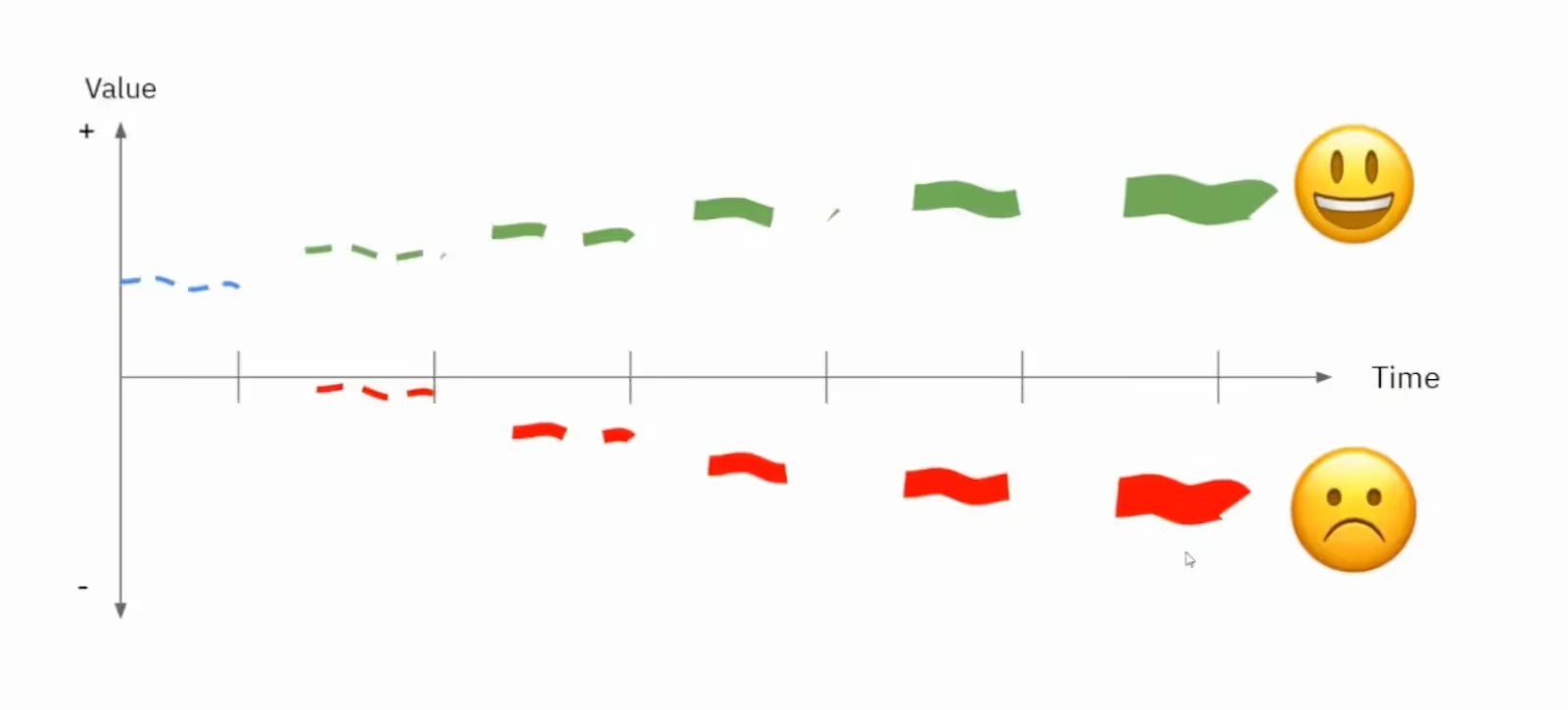
Now if a major issue such as a network outage takes place, your happy customers are going to be more understanding and accommodating of the issues that arise from the outage. The unhappy customers are likely to see this as more evidence that they have made the wrong decision by picking your offering. Essentially, both sets of customers experience the same negative event, but their confirmation bias works in your favor in the case of happy customers and against you in the case of unhappy customers.
This is why it is important to get your customers on the happy side. And looking at the path, the initial expectation phase is critical.
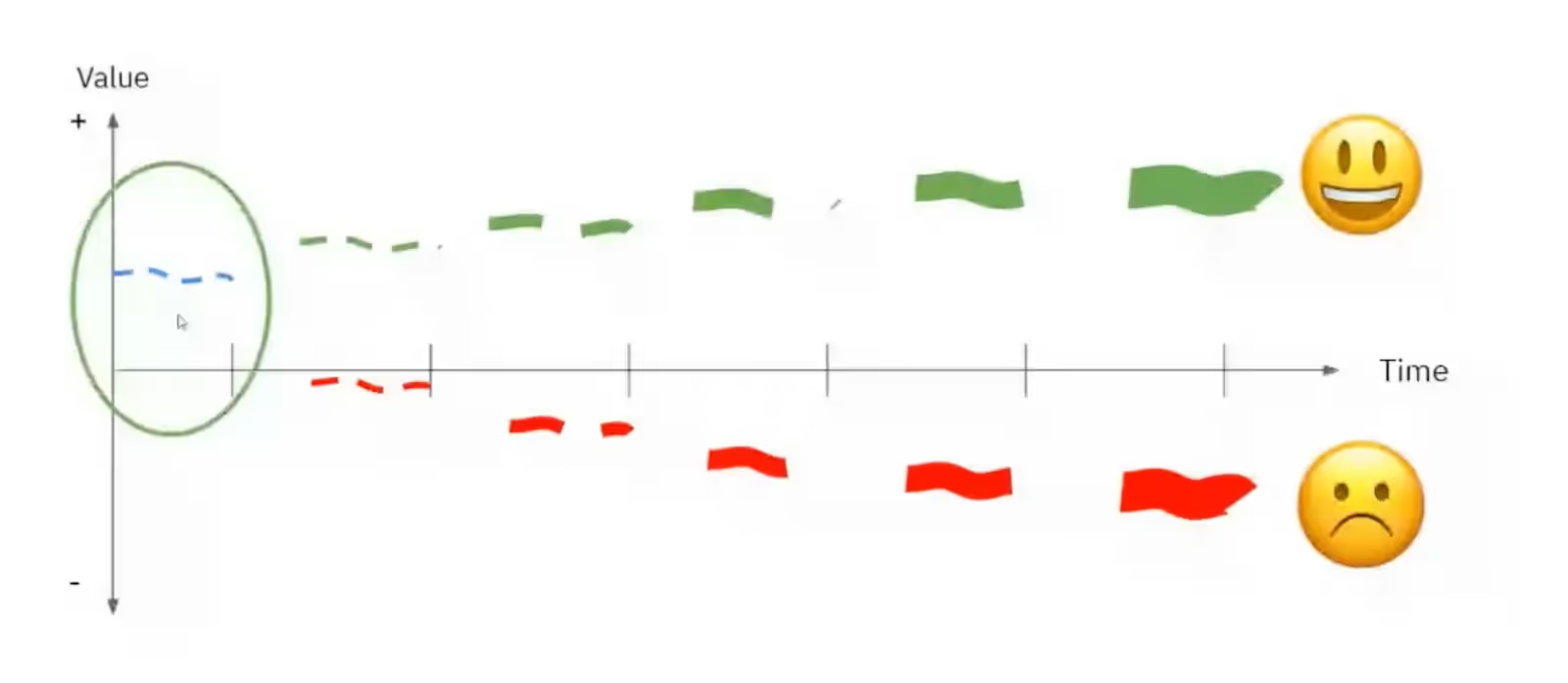
In the CS space, everyone knows managing customer expectations is important; few understand its significance. How you handle the expectation phase will determine whether or not your customer can get on the ‘happy path’.

The next thing to ponder over is, how do you keep customers in the happy path? This is where a grasp over how memory works can come in handy.
5. How memory works
The brain records and stores fragments of information. E.g. if you think back to your last vacation, you probably remember the sceneries, the people you went with, etc. You most likely do not remember the flight number, or what you had for lunch mid-vacation. So the brain captures fragments of experiences, wraps them in a narrative, giving us an impression that we remember everything.
As a result, when the brain makes a retrospective analysis, it averages the highs and lows, and decides you had a good experience. You’d probably find yourself telling your friend you’d do that vacation again.
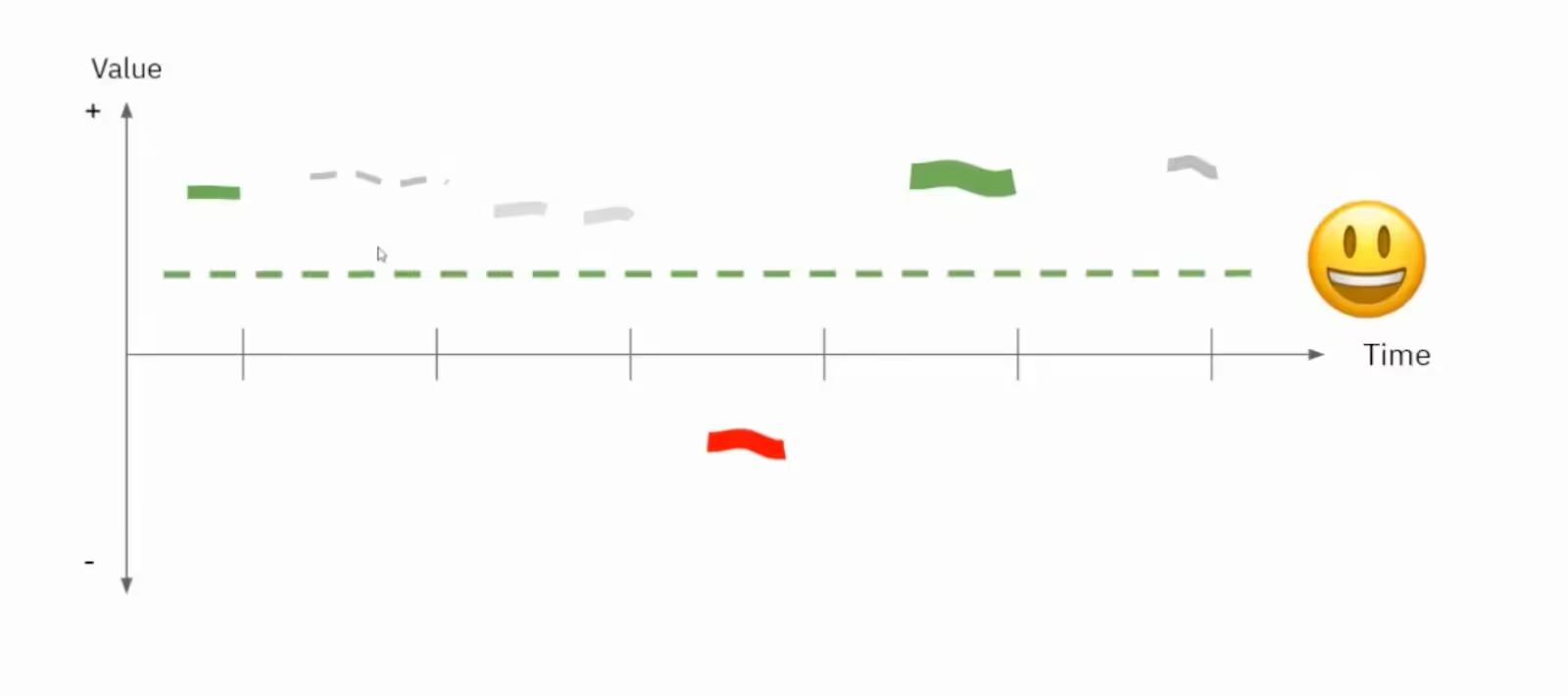
Customers go through the same process when they evaluate their relationship with your company during renewals. Mostly good experiences will have them renewing, mostly bad experiences will lead to churn.
What is memorable?
Scientists say the brain remembers the following kinds of events:
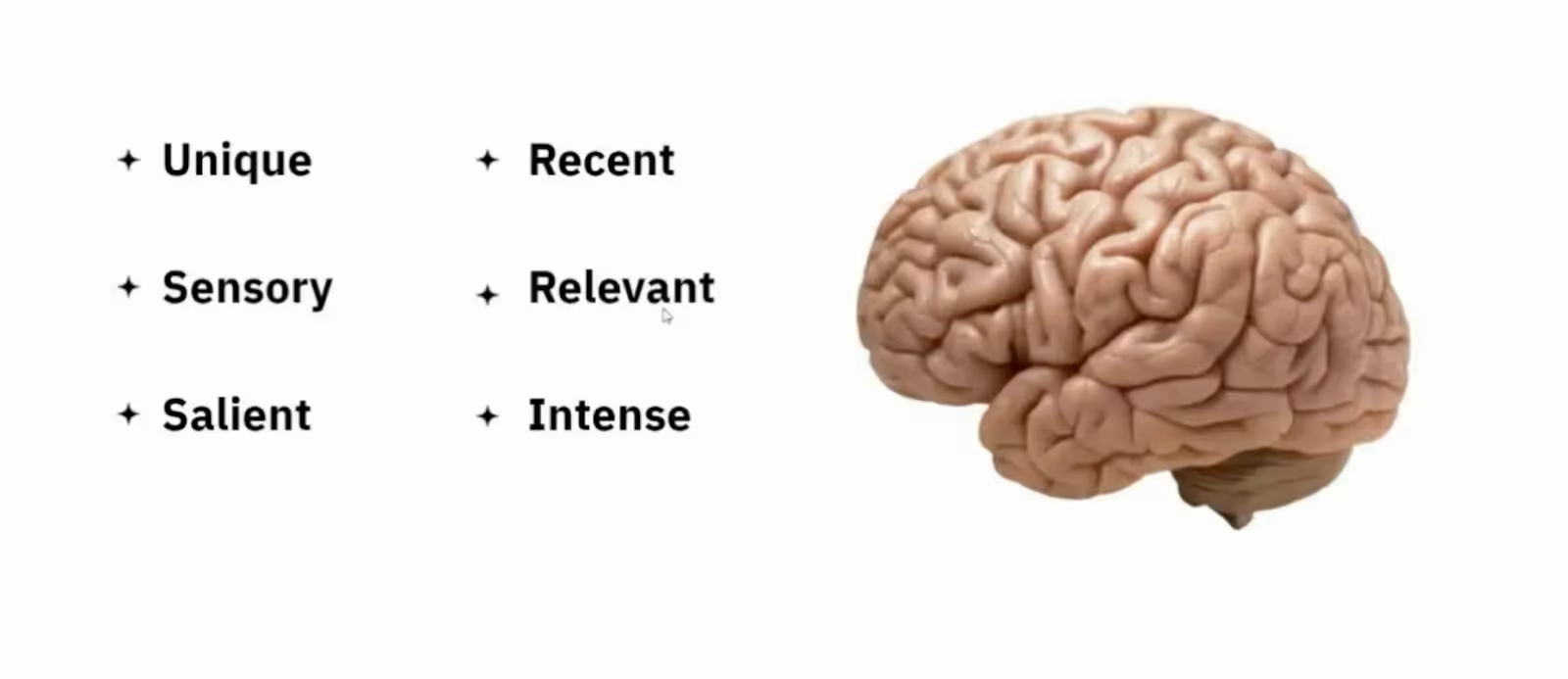
The brain marks events of these qualities with somatic markers to indicate they are important. When we sleep, the brain does ‘memory consolidation’: it unpacks memories, looks for these markers, and retain them, discarding the rest.
6. The five critical moments in the customer journey
Applying this to customer experience, Ed says there are five critical moments in their journey that customers are bound to remember—moments that are going to hold meaning for them and influence their decisions.
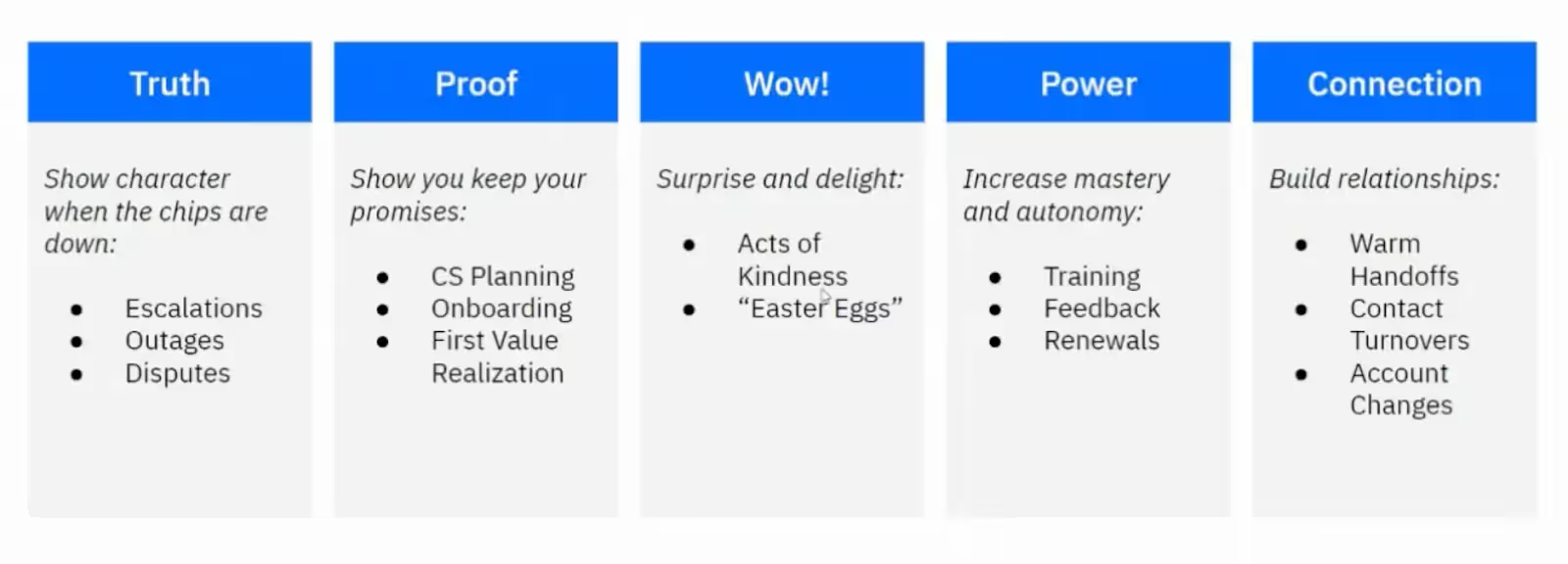
Moments of Truth
This is when you show character when the chips are down: during escalations, disputes, etc. This is how you handle upset customers. If you fumble this, it will change your entire relationship with them. Handle them well and you build trust.
Moments of Proof
These moments are when you show your customers that you keep the promises you make. This influences the learning phase of value-based decision making. The customer onboarding phase is filled with these moments: planning, the onboarding process itself, first value realization, etc.
Moments of ‘Wow!’
These are moments the customer is surprised or delighted. Thoughtful communication such as thank you notes, something that puts a smile on their face, make them tell other people about the act, etc. are all moments of ‘wow!’
Moments of Power
These are moments when the customers experiences autonomy or a sense of accomplishment. These moments help them feel empowered. Moments when they are able to do something differently, providing customer training, soliciting feedback, making a renewal, etc. fall under this category.
Moments of Connection
These moments arise out of your relationship with them. Customers remember when you make a human connection with them, make yourself relatable (‘Hey! We’re from the same hometown!’) count as moments of connection. You can make these moments happen during handoffs, account handovers, etc.
7. Designing CX for Success
To bake these moments into your customer experience, you need to look at the customer’s journey from their perspective. Understand how their brains process the journey.
Ed recommends not using the LAER model, as it is very internally-focused. If you use ‘land-and-expand’ on your customers, there are chances that they might be offended by that.
No one wants to be landed on or expanded upon.
So we need to look at the customer’s realities, and analyze their effective and affective needs. We need to look at how well we are satisfying the customer’s emotional (System 1) needs. Next, we should map our processes to those emotional needs, and look for opportunities to improve. Next, we prioritize those improvements by looking at it from the lens of the five critical moments.
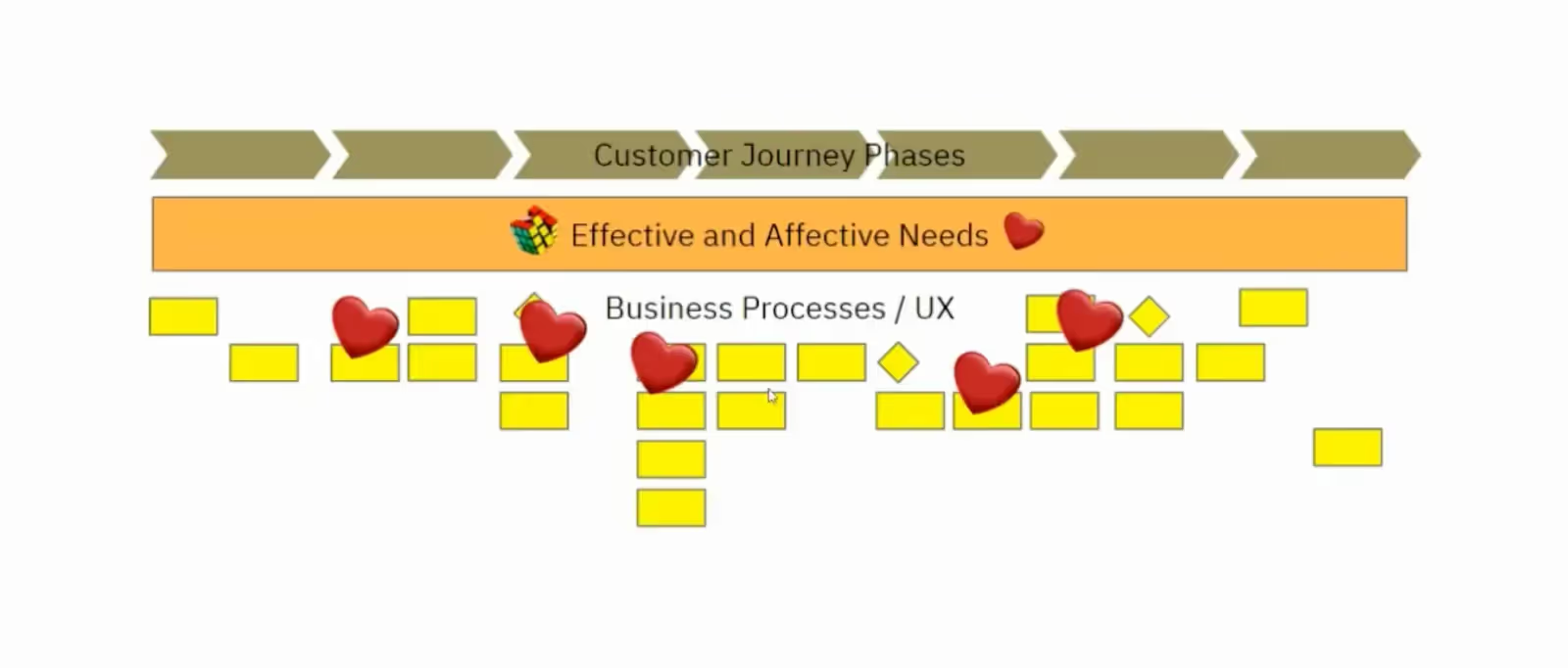
Look at where these moments can pop up during the journey; and if those moments need improvement, prioritize the improvements, as these are the moments that will have the greatest impact on customer experience and thereby their decisions.
Making desirable improvements in the customer journey
Once these moments have been identified and it has been established that they need improvement, Ed recommends that we be systematic about it: the moments need to be well-ordered, repeatable, and uses data and information to foster the learning required to reinforce positive experiences.
TL;DR
To wrap, here are the key points to using neuroscience to influence customer decisions:
- Identify the five critical moments in your customer’s journey by looking at it from their point of view. Map these moments in your process and prioritize them
- Handle those moments systematically instead of leaving them to chance
- When you are intentional about creating these moments, it leads to happy customers with positive experiences
- These positive experiences will influence their beliefs about you, which will in turn influence their future decisions
- This will lead to renewals and expansions for you


